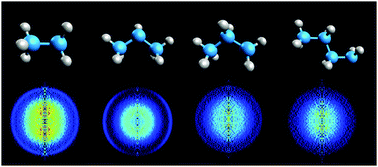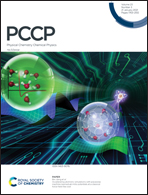Site-specific hydrogen-atom elimination in photoexcited alkyl radicals
Abstract
A prompt site-specific hydrogen-atom elimination from the α-carbon atom (Cα) has been recently reported to occur in the photodissociation of ethyl radicals following excitation at 201 nm [Chicharro et al., Chem. Sci., 2019, 10, 6494]. Such pathway was accessed by means of an initial ro-vibrational energy characterizing the radicals produced by in situ photolysis of a precursor. Here, we present experimental evidence of a similar dynamics in a series of alkyl radicals (C2H5, n-C3H7, n-C4H9, and i-C3H7) containing the same reaction coordinate, but different extended structures. The main requirements for the site-specific mechanism in the studied radicals, namely a rather high content of internal energy prior to dissociation and the participation of vibrational promoting modes, is discussed in terms of the chemical structure of the radicals. The methyl deformation mode in all alkyl radicals along with the CH bending motion in i-C3H7 appear to promote this fast H-atom elimination channel. The photodissociation dynamics of the simplest unsaturated alkyl radical, the vinyl radical (C2H3), is also discussed, showing no signal of site-specific fast H-atom elimination. The results are complemented with high-level ab initio electronic structure calculations of potential energy curves of the vinyl radical, which are compared with those previously reported for the ethyl radical.



 Please wait while we load your content...
Please wait while we load your content...